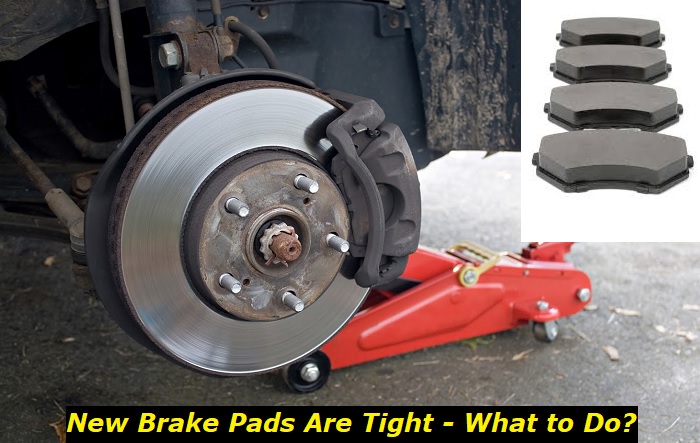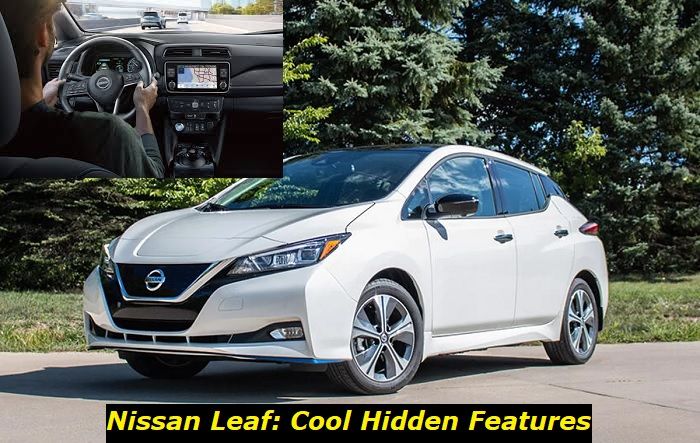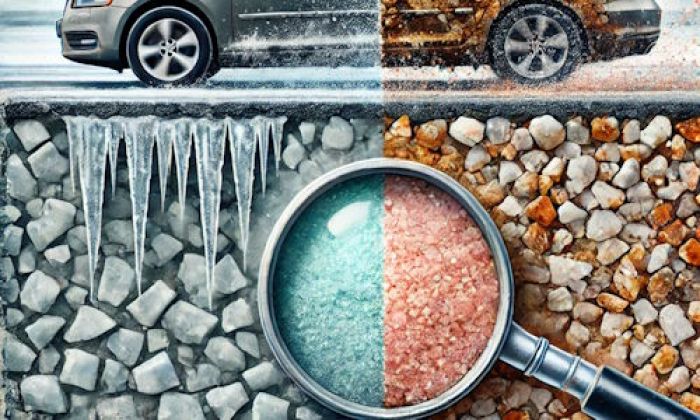Every vehicle owner wants every cog in their machine to function optimally. Replacing your brake pads routinely is a great place to start. It is undoubtedly the best method to enhance your rotors' durability. Nevertheless, new brake pads may cause issues when installed too close to the rotor.
Brake pads problems highlights
- Level of urgency:super-urgent
- DIY diagnostics:possible but complicated
- DIY repairs:impossible
- Price for repair:$250 - $450
- Common symptoms:sounds when braking, unintentional braking, warped rotor
- Commonreasons:bad pads, improper installation, old pads
- If ignored:rotor wear, bad brakes, damage to the system

How To Identify That New Brake Pads Are Too Tight
Machines always act out and seek attention when things aren't working as they should. Here is how your car will let you know that your brake pads are too tight on the rotor.
1) Resistance or dragging when driving
A smooth drive is a classic sign of every element in your vehicle doing its job as expected. So, your vehicle dragging when driving is cause for alarm. It may indicate that the brake pads are not disengaging from the rotors effectively, thus causing persistent friction.
2) Reduced fuel mileage
The increased friction caused by dragging brake pads can put additional resistance on the wheels, which can result in a reduction in fuel efficiency. So, fuel that would normally last you a few miles lasts less.
3) Uneven brake pad wear
You might want to examine your brake pads for uneven wear patterns on them. It may be a sign that the pads are not separating from the rotors correctly. Your brake system's efficiency can be lowered by the untimely pad wear caused by uneven wear.
4) Overheating
When you're driving, the brake pads may bind or rub against the rotors, which may result in overheating. You might notice a burning smell when your brakes are overheated. The efficacy of the braking system might also be compromised.
5) Screeching or shrill noise
When your brake pads are too tight, they are in constant contact with the rotors, even when you are not pressing the brakes. This contact may produce a shrill sound. Of course, your new brake pads are bound to make some noise during the breaking-in period but it's vital to note the type of noise. Persistent and loud screeching could be a sign of trouble that you should get checked out by a professional.
6) Excessive brake dust on wheels
Normally, a little brake dust on your wheels is fine, because it indicates the brakes are functioning properly. However, excessive brake dust is a cause for alarm.
Due to continuous friction with the rotors, excessively tight brake pads can produce too much brake dust. This could indicate an issue with your braking system, especially if it's after you've just replaced your brake pads.
Is It Safe To Drive When New Brake Pads Are Tight On The Rotor?
Now that you know overly tight brake pads are bound to affect your car's performance, it is only natural to wonder how safe your car is to drive. You may begin to suspect that your brake pads are problematic while at home or on the road.
At this point, you probably wonder if it's safe to drive. If you intend to get your vehicle to a garage yourself, then it's best to avoid abrupt stops, hard braking, or hard braking at high speeds. Nonetheless, it's better if you contact a towing company. It's advisable to take care of the problem as soon as possible to avoid incurring future expenses.
Causes Of New Brake Pads Being Too Tight
There are several likely causes for your brake pads being too tight. These include
1) Improper or Poor-Quality Brake Pads
Cheap is expensive. While cheap brake pads are economical, they may not be the right fit or quality for your vehicle. When you use the wrong brake pads, they won't fit or align properly, which can cause the brakes to jam up against the rotor.
2) Poor Installation
It may seem convenient for you to hire the most affordable mechanic, but it will cost you in the long run. Brake pads might be too tight as a result of an installation error. When your mechanic installs your brake pads incorrectly, they might get misaligned and clamp against the rotor. It's always advisable to follow the manufacturer's instructions and use the appropriate tools during installation.
3) Excess Heat
As a great driver, you likely know better than to brake too hard. Agreeably, sometimes heavy braking is inevitable, but doing it for long can build up excessive heat.
4) The Brake Caliper Piston is Stuck
If your vehicle has a disc braking system, then it has a caliper piston that's in charge of pressing the brake pad against the rotor. So, imagine if this piston gets jammed in place during the process. The brake pad will remain in non-stop contact with the rotor, thus increasing the tightness.
5) Defective Caliper Slides
The main function of caliper slides is to help the caliper piston move effortlessly while conforming to the movement of the rotor. If your vehicle's caliper is defective, it may fail to withdraw properly, causing the brake pads to remain stuck to the rotor.
How To Adjust New Brake Pads
You must fine-tune your brake pads accordingly to ensure the braking system is in ideal condition. Below is a comprehensive guide on adjusting new brake pads.
a) Check your brake pads for unevenness
You should first examine your vehicle's brake system to ensure all the parts are properly positioned. For instance, if your caliper is askew, it can apply inconsistent pressure to the pads, resulting in tightening.
b) Confirm if the Caliper Slides work
We've established that your vehicle's brake pads can stick to the rotor if the brake caliper is faulty. So it's wise to check out if the caliper slides work adequately to ensure the brake caliper is at peak performance. You can also wipe down and lubricate the caliper slides, to prevent the slides from clamping and rusting.
c) Check the Quality of the Brake Pads
Sometimes scheming mechanics may try to trick individuals for a quick buck by using cheap parts. Low-quality brake pads could affect your vehicle's braking power. So if you suspect your new brake pads might be too tight, inspect them carefully to ensure they're suitable enough for your vehicle. If they're not, get a certified professional to replace them for you.
d) Confirm the Rotor Size
Your car is most likely to develop rotor complications if it's been fit with improperly sized rotors. You need to confirm that the rotors attached to your vehicle are up to code with the manufacturer's instructions.
e) Check the Brake Fluid Pressure
Extremely high brake fluid pressure can cause brake pads to tighten. So, it's best to check your vehicle's pressure to ensure it's hitch-free. To guarantee your vehicle has suitable pressure, you could consider draining the braking system. Nevertheless, ensure you hire a trained professional to deal with it.
f) Modify the caliper piston accordingly
We've learned that the brake's caliper piston can fail to withdraw completely thus pressing the brake pads closer to the rotor. There are caliper tools available that you can use to modify the piston.
g) Invest in Professional Services
Sure, a DIY project can save you a lot of money, but a costly professional tune-up will be more beneficial down the road. You should take your car to a qualified mechanic for a complete inspection if the problem remains even after you've attempted each of the previous fixes. You never know, a pro can help you identify other underlying issues that may need repair.
h) Master the break-in process
Your brand-new brake pads will require some time to settle into the vehicle. You should perform the break-in process if the brake pads are too tight. Not only will it help eliminate the annoying squeaking sounds, but also enhance your vehicle's braking power.
The process may differ depending on the brake pads you use. Therefore, you should always follow the break-in instructions provided by the specific manufacturer.
A Guide To Breaking-In Brake Pads
- A nice place to start is for you to locate a parking lot or a clear road where you can securely make a few stops.
- You should then drive at a speed of around 30 to 40 mph then moderately brake to reduce speed to below 15 mph. Repeat this process twice or thrice.
- From five to ten times, alternate between the acceleration and braking, but this time increase the speed. You shouldn't stop completely or keep the brakes engaged for long during each halt.
- Once you're done revving up the vehicle, drive for a few miles to allow the braking system to cool. During this period, you should only lightly press the brakes. Park the car for roughly an hour to enable the brake system to air out and avoid using it for a few subsequent hours.
Conclusion
You should always keep in mind that effective brake operation is essential for both your safety and that of other motorists. You ought to have the mandatory mechanical expertise and understanding before performing any mechanical modifications.
It's recommended to have a competent mechanic evaluate and fix the problem if you are unsure about making the necessary modifications. This will ensure your brake system performs efficiently and securely.
About the authors
The CarAraC research team is composed of seasoned auto mechanics and automotive industry professionals, including individuals with advanced degrees and certifications in their field. Our team members boast prestigious credentials, reflecting their extensive knowledge and skills. These qualifications include: IMI: Institute of the Motor Industry, ASE-Certified Master Automobile Technicians; Coventry University, Graduate of MA in Automotive Journalism; Politecnico di Torino, Italy, MS Automotive Engineering; Ss. Cyril and Methodius University in Skopje, Mechanical University in Skopje; TOC Automotive College; DHA Suffa University, Department of Mechanical Engineering






Add comment